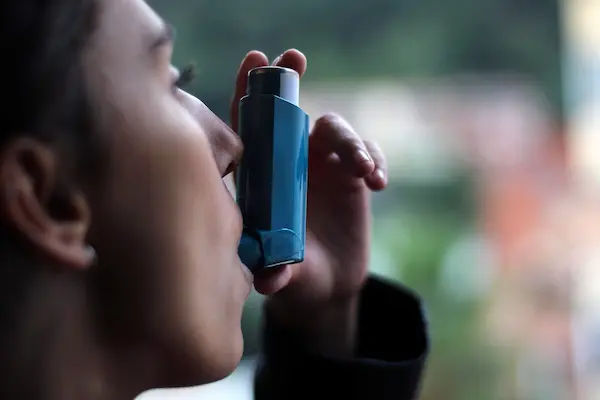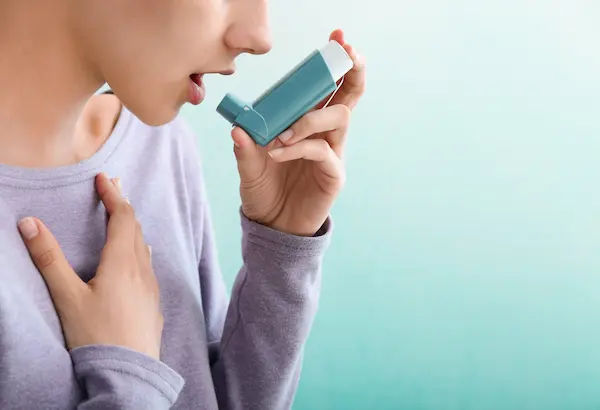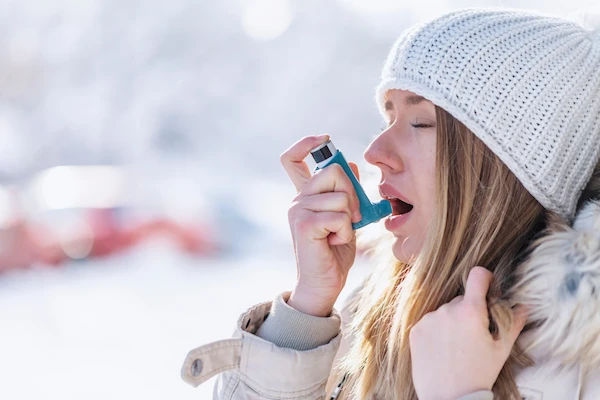A Comprehensive Guide to Managing Asthma in Adults and Children
Learn about asthma in adults and children, including causes, symptoms, triggers, diagnosis, treatment, and management strategies for living a full and active life.


Introduction
Asthma is a common chronic condition that affects the airways, making breathing difficult for millions of adults and children worldwide. Characterised by inflammation and narrowing of the bronchial tubes, it can cause a range of symptoms from a mild, persistent cough to severe, life-threatening attacks. Understanding asthma is the first step toward effective management. This guide delves deep into the nuances of the condition, highlighting the critical differences between asthma in adults and childhood asthma. We will explore the causes, symptoms, and most importantly, the modern treatment and management strategies that allow individuals to lead active, healthy lives. Whether you're newly diagnosed or supporting a loved one, this article provides the essential knowledge you need to take control of respiratory health.
What is Asthma? Understanding the Chronic Airway Condition
Asthma is not a one-size-fits-all disease; it's a chronic respiratory condition where the airways in the lungs become inflamed, swollen, and hyper-reactive. When exposed to certain triggers, these sensitive airways constrict, produce excess mucus, and make it difficult for air to flow in and out. This results in the classic symptoms of wheezing, coughing, and tightness in the chest. It's crucial to understand that asthma is a long-term condition that can be controlled but not cured. Effective management focuses on reducing inflammation and avoiding triggers to prevent symptoms from occurring in the first place.
The Physiology of an Asthma Attack
An asthma attack, or exacerbation, is a sudden worsening of symptoms. It's a cascade of three key events inside the airways:
- Inflammation: The lining of the airways becomes swollen and irritated.
- Bronchoconstriction: The muscles surrounding the airways tighten, squeezing them shut.
- Mucus Production: The airways produce thick mucus, further clogging the narrowed passages.
This combination significantly reduces airflow, making exhalation particularly difficult. Imagine trying to breathe through a narrow straw that is also filled with sticky gel—this is similar to the experience of a severe asthma attack.
Recognising the Signs: Asthma Symptoms Across Ages
Symptoms can vary greatly from person to person and even from day to day. Recognising the signs early is key to preventing a full-blown attack.
Common Asthma Symptoms in Children
Diagnosing asthma in children can be challenging, as symptoms often mimic those of common colds or respiratory infections. Key indicators include:
- A frequent cough that worsens at night or during play.
- A whistling or wheezing sound when breathing out.
- Shortness of breath or rapid breathing.
- Complaints of chest tightness or "hurting."
- Fatigue or irritability due to disrupted sleep.
In toddlers, you might notice them sucking in their stomach or seeing the skin between their ribs pull in with each breath (retractions). If you observe these childhood asthma symptoms, it's important to consult a paediatrician.
How Asthma Presents Differently in Adults
Adult-onset asthma often presents with a persistent cough as the primary symptom, which can be mistaken for bronchitis or even acid reflux. Unlike children, adults are more likely to have fixed airway obstruction, meaning their lung function may not return to 100% normal even with medication. Adults are also more likely to have other coexisting conditions, such as obesity or sinusitis, which can complicate diagnosis and treatment.
Consult a Pulmonologist for the best advice
Recognising Asthma Attack Symptoms
A severe attack is a medical emergency. Warning signs include:
- Symptoms that rapidly worsen (severe wheezing, coughing).
- Extreme difficulty breathing, inability to speak in full sentences.
- Lips or fingernails turning blue or grey (cyanosis).
- No improvement after using a quick-relief (rescue) inhaler.
If these occur, seek emergency medical help immediately.
Root Causes and Common Triggers
While the exact cause of asthma is unknown, it's believed to result from a combination of genetic and environmental factors.
Genetic and Environmental Risk Factors
A family history of asthma or allergies significantly increases risk. Exposure to tobacco smoke (especially in utero or during childhood), viral respiratory infections early in life, and occupational exposures (e.g., chemical fumes, dust) are major contributors. The "hygiene hypothesis" suggests that reduced exposure to germs in early childhood may hinder immune system development, increasing the tendency for allergies and asthma.
The Most Prevalent Asthma Triggers
Knowing and avoiding your triggers is a cornerstone of management. Common ones include:
- Allergens: Dust mites, pollen, pet dander, mould spores.
- Irritants: Smoke, air pollution, strong chemical fumes.
- Respiratory Infections: Colds, flu, and sinus infections.
- Physical Activity: Exercise-induced bronchoconstriction.
- Weather: Cold, dry air or sudden temperature changes.
- Strong Emotions: Stress, laughter, or crying.
Getting a Diagnosis: Tests and Procedures
If you suspect asthma, a doctor can perform tests to confirm it. If your symptoms persist beyond two weeks, consult a doctor online with Apollo24|7 for further evaluation.
Diagnosing Asthma in Adults
For adults, diagnosis typically involves a spirometry test. This non-invasive test measures how much air you can exhale and how quickly. The doctor may have you perform the test before and after inhaling a bronchodilator medication to see if your lung function improves. Other tests may include allergy testing, chest X-rays, or FeNO tests to measure airway inflammation.
The Challenges of Diagnosing Asthma in Young Children
Spirometry is difficult for children under 5. Therefore, diagnosis relies heavily on the child's medical history, reported symptoms, and physical exam. A doctor may prescribe a trial of asthma medication to see if the child's symptoms improve. Apollo24|7 offers convenient home collection for tests like allergy panels that can help identify potential triggers in children.
Asthma Treatment and Management Strategies
Modern asthma treatment is highly effective and focuses on two main goals: controlling chronic inflammation and relieving acute symptoms.
Medication: Quick-Relief vs. Long-Term Control
- Quick-Relief Inhalers (Rescue): These contain short-acting beta-agonists that quickly relax tightened airway muscles during an attack. They are not for daily use.
- Long-Term Control Medications: These are the cornerstone of management for persistent asthma. Taken daily, they reduce underlying inflammation. The most common are inhaled corticosteroids. Other options include leukotriene modifiers and combination inhalers.
Mastering Your Inhaler Technique
Using an inhaler incorrectly is a common reason for poor asthma control. Whether you use a Metered-Dose Inhaler (MDI) with a spacer or a Dry Powder Inhaler (DPI), proper technique is vital. A spacer device attached to an MDI can dramatically improve medication delivery to the lungs, especially for children. Ask your doctor or pharmacist to demonstrate the correct use for your specific device.
The Essential Asthma Action Plan
Every person with asthma should have a written, personalised asthma action plan created with their doctor. This plan is a colour-coded guide (Green for well-managed, Yellow for worsening, Red for medical alert) that tells you exactly which medications to take and when, based on your symptoms or peak flow meter readings. It empowers you to take control before a crisis occurs.
Living a Full Life with Asthma
With proper management, having asthma should not limit your life. Olympic athletes, professional singers, and countless active individuals manage their condition successfully.
Asthma and Exercise: Staying Active Safely
Exercise is encouraged for people with asthma. It strengthens respiratory muscles and improves lung capacity. The key is to manage exercise-induced asthma. This involves using a rescue inhaler 15-30 minutes before activity, performing a proper warm-up and cool-down, and choosing activities less likely to trigger symptoms (like swimming in a warm, humid environment).
Managing Asthma at School and Work
Communication is essential. For children, provide the school nurse and teachers with a copy of the asthma action plan and ensure the child has access to their rescue inhaler. For adults, informing a trusted colleague or HR about your condition and what to do in an emergency can be life-saving.
Key Differences: Childhood Asthma vs. Adult-Onset Asthma
Understanding these differences is critical for effective care.
- Onset & Prognosis: Many children with asthma may see their symptoms lessen or disappear as they grow older (they "outgrow" it). Adult-onset asthma is often persistent and less likely to go into remission.
- Symptoms: Children more commonly present with wheezing, while adults often have a predominant cough.
- Causes: Childhood asthma is strongly linked to allergy and genetics. Adult-onset asthma can be triggered by allergens, but also by occupational exposures, hormones, or illness.
- Treatment Response: Children's airways are more responsive to treatment and often recover fully between attacks. Adults may develop some permanent reduction in lung function.
Conclusion
Living with asthma, whether as an adult or caring for a child with the condition, requires knowledge, vigilance, and a proactive partnership with healthcare providers. By understanding the triggers, adhering to a prescribed treatment plan, and mastering the use of an asthma action plan, you can effectively control the disease. Remember, the goal is not just to treat symptoms but to prevent them, allowing for a life full of activity and free from fear. Advances in medication and management strategies have made this goal entirely achievable. Take the insights from this guide, engage with your doctor, and take the first step toward confident, effective asthma management today.
Consult a Pulmonologist for the best advice
Consult a Pulmonologist for the best advice

Dr Rakesh Bilagi
Pulmonology Respiratory Medicine Specialist
10 Years • MBBS MD PULMONOLOGIST
Bengaluru
Apollo Clinic, JP nagar, Bengaluru
Dr. Naseeha Mohammed S V
Pulmonology Respiratory Medicine Specialist
6 Years • MBBS, MD ,DNB Respiratory Medicine
Bengaluru
Apollo Clinic, Sarjapur Road, Bengaluru

Dr. Amrutha G
General Physician/ Internal Medicine Specialist
10 Years • MBBS,DNB(family medicine), Diabetologist-CCEBDM,CCGDM
Bengaluru
Apollo Clinic, Sarjapur Road, Bengaluru

Dr. Sumara Maqbool
Pulmonology Respiratory Medicine Specialist
12 Years • MBBS, DNB Respiratory, critical care and sleep medicine, DrNB superspeciality Critical care, IDCCM, IFCCM, EDIC
Delhi
Apollo Hospitals Indraprastha, Delhi
(25+ Patients)
Dr. Sasikamalam
General Practitioner
1 Years • MBBS
COIMBATORE
Apollo Sugar Clinic Coimbatore, COIMBATORE
Consult a Pulmonologist for the best advice

Dr Rakesh Bilagi
Pulmonology Respiratory Medicine Specialist
10 Years • MBBS MD PULMONOLOGIST
Bengaluru
Apollo Clinic, JP nagar, Bengaluru
Dr. Naseeha Mohammed S V
Pulmonology Respiratory Medicine Specialist
6 Years • MBBS, MD ,DNB Respiratory Medicine
Bengaluru
Apollo Clinic, Sarjapur Road, Bengaluru

Dr. Amrutha G
General Physician/ Internal Medicine Specialist
10 Years • MBBS,DNB(family medicine), Diabetologist-CCEBDM,CCGDM
Bengaluru
Apollo Clinic, Sarjapur Road, Bengaluru

Dr. Sumara Maqbool
Pulmonology Respiratory Medicine Specialist
12 Years • MBBS, DNB Respiratory, critical care and sleep medicine, DrNB superspeciality Critical care, IDCCM, IFCCM, EDIC
Delhi
Apollo Hospitals Indraprastha, Delhi
(25+ Patients)
Dr. Sasikamalam
General Practitioner
1 Years • MBBS
COIMBATORE
Apollo Sugar Clinic Coimbatore, COIMBATORE
More articles from Asthma
Frequently Asked Questions
Can asthma be cured?
No, there is currently no cure for asthma. However, it can be very effectively managed with medication and lifestyle adjustments, allowing most people to live normal, active lives without experiencing frequent symptoms.
What are the best natural remedies for asthma?
While some find relief with breathing exercises (like the Buteyko method), maintaining a healthy weight, and avoiding triggers, these should complement—not replace—prescribed medical treatment. Always discuss any new remedies with your doctor to ensure they are safe and appropriate for your specific case of asthma.
How can I tell if my child's cough is asthma?
A cough related to childhood asthma is often persistent, worsens at night or in the early morning, and is triggered by laughing, crying, or physical activity. If your child has a cough that lingers long after a cold is gone or is accompanied by wheezing or breathing difficulties, consult a paediatrician.
Is it safe to use a corticosteroid inhaler daily?
Yes. Inhaled corticosteroids are the gold standard for long-term asthma control and are very safe when used as directed. The medication is delivered directly to the lungs, minimising systemic side effects. The risk of uncontrolled asthma far outweighs the minimal risk of these medications.
What is the difference between an asthma attack and anaphylaxis?
Both can cause breathing difficulties, but anaphylaxis is a severe, life-threatening allergic reaction that often involves other symptoms like hives, swelling of the face/throat, and a rapid drop in blood pressure. An asthma attack is primarily a respiratory event. However, they can occur together. Anaphylaxis always requires immediate treatment with an adrenaline auto-injector and emergency care.




